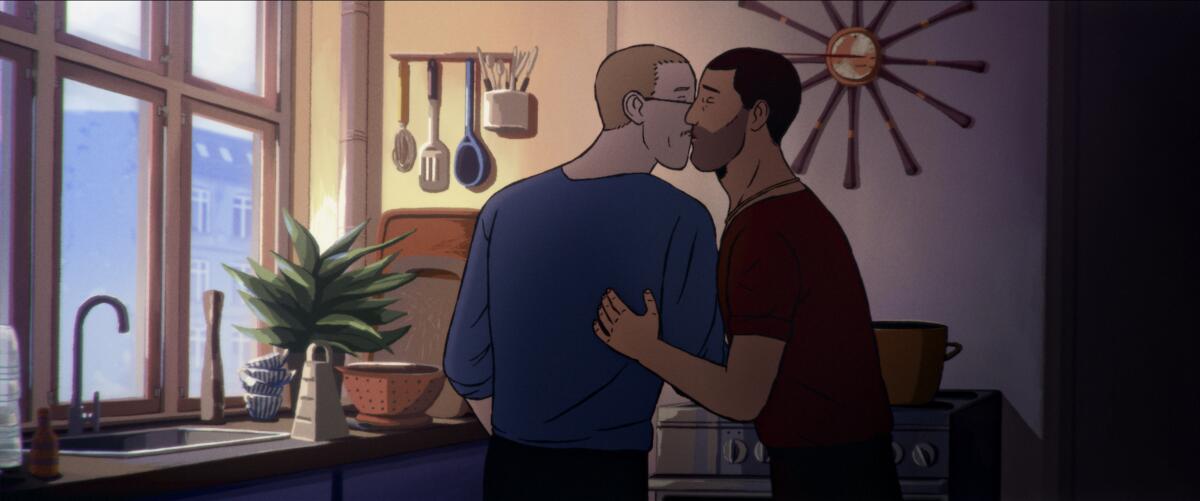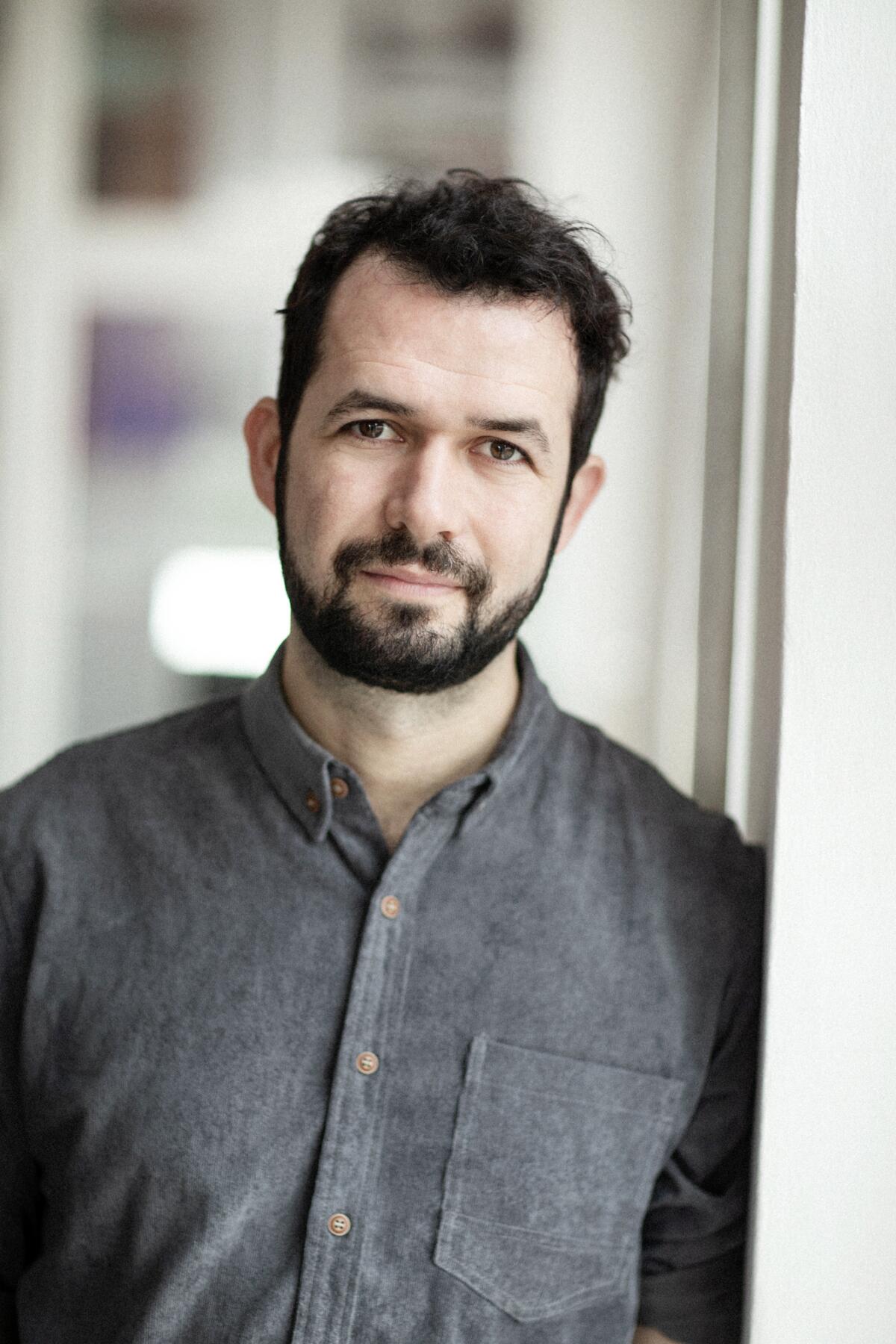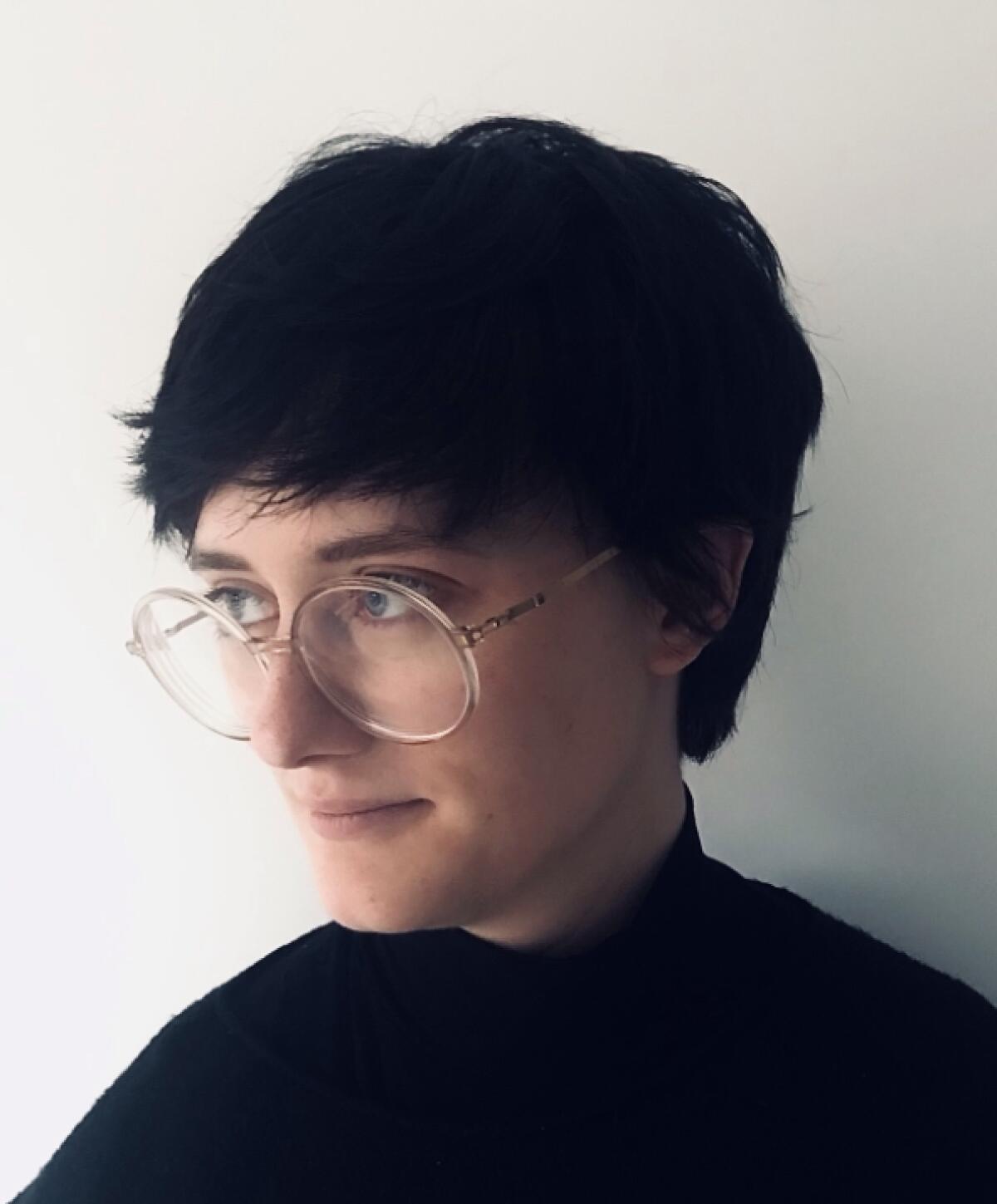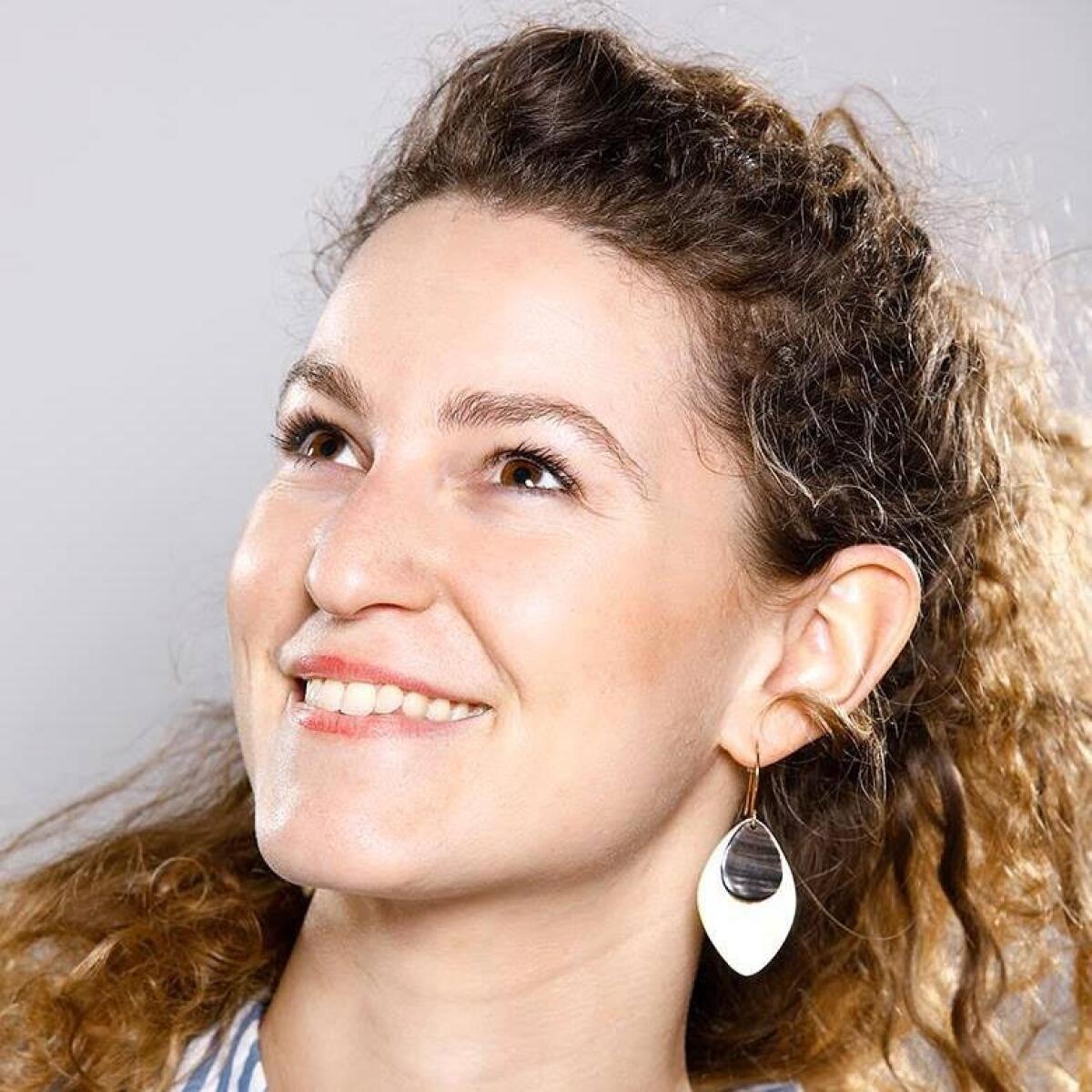‘Flee’ animators draw a fine line between keeping secrets and keeping emotions

- Share via
Making “Flee” look so authentic that it’s earned an unprecedented trifecta of animation, documentary and international feature Oscar nominations was just part of the challenge. The hand-drawn true story also had to do emotional justice to its central character’s agonizing, five-year refugee journey from 1990s Afghanistan to safety in Denmark.
While hiding his identity.
It had taken decades for director Jonas Poher Rasmussen to get his childhood friend to tell his story, but he still wanted to maintain his privacy, to be known only by the pseudonym Amin. Yet watching Amin describe his great traumas and hard-won victories for the first time would be any movie’s compelling core.

Sun Creature, a Danish-French animation studio that had never made a feature-length film before, provided the way. Animation director Kenneth Ladekjær, art director Jess Nicholls, chief executive officer and executive producer Charlotte de La Gournerie and their teams worked up a subtly realistic, graphic-novel-like 2-D style that appealed to Rasmussen’s documentarian sensibility, along with a more abstract, charcoal drawing technique — which Simon Rouby storyboarded and Gilles Cuvelier animated — to evoke Amin’s frightful memories of, well, fleeing.
“When I approached Amin with this idea, he was really intrigued by the fact that he could be anonymous behind animation,” Rasmussen says.
The director videotaped Amin. The artists didn’t meet their subject but had access to the footage, and they needed to draw a fine line between keeping secrets and registering accurate expressions.
“It was important that the animation never be rotoscoping,” Ladekjær notes. “It was always meant to be an interpretation. We have designs of Amin that look different, of course, but still have some similarities. You can still look at how he wipes his tears away, what he looks like when he starts to cry. Does his face sort of contract, or is he more calm? When he laughs, does his whole body move, or is his body language more held back?”
One overriding characteristic the animators gave Amin could be called a resting sad face.

“It’s true that Amin’s eyebrows mostly point upwards, so he has this constant sad face,” Ladekjær notes. “It’s a way to show that he’s carrying this burden of not being able to be himself. He can’t quite relax at any point in the movie.”
Although the animators had to visualize a number of depressing and even terrifying scenarios, it wasn’t all sorrow. Young Amin’s infatuation with Jean-Claude Van Damme, whose movie posters decorated the boy’s Kabul bedroom, provided some relief.
“We didn’t get the rights from Jean-Claude to invent scenes, so I had to almost step-frame ‘Bloodsport’ and copy it as close as I could,” Ladekjær says. “But that’s just fun, when you get to animate someone doing a flying roundhouse kick in tight pants.”

On the other end of the thematic spectrum, those scarier sequences were extraordinarily trying — and not just because of their subject matter.
“A lot of this was, how do we show something that’s at night and there should be almost no light source except for the moon?” Nicholls recalls composing a forest border-crossing where the trafficker threatens increasingly exhausted refugees. “We had to work out how do we show enough to be able to see what’s going on but not so much that you feel like it’s fake lit, because then it starts to feel not like a real story but like a narrative fiction. So we had to set the scene and then use the camera to build the tension slowly by cutting between people.”

For Australian Nicholls, though, the toughest sections to get right were Amin’s childhood memories of Kabul. Since he left, the Afghan capital has been altered by more wars, and few photographic records of the early ‘90s city were digitized. Visual sources for Kabul’s streets and buildings were found in libraries around Copenhagen and old newsreels the film’s live footage archivists provided. Even books written by Russians who were occupying Afghanistan at the time were combed for descriptions of items sold by street vendors.
“And we had a group of Afghans based in Denmark who we were able to show the Kabul sections,” she says. “It was quite late in the process, so thank God it was good; they just said, ‘If you change the cooking ware to this particular brand and add more TV antennas, you’re pretty much there.’”
The one expert they all wanted to please was impressed — most of the time.

“During the character design, I did a selection of outfits,” Ladekjær says. “Amin liked most of them, but there was one in particular with this big yellow stripe across the chest that he just said, ‘I would never wear that!’”
“Amin was very surprised by how things really looked like his memory,” Rasmussen adds. “He loved how the windows in Afghanistan are very particular, and we had those in there. Because of all the research Jess had done, he could recognize his childhood home.”
And perhaps recognize himself, even if no one else can.
“We really focused on the subtlety,” De La Gournerie points out. “Sometimes animation can be very overacted, but here it needs to be very sensitive and leave space for the voice that is there, and space for breathing. Kenneth was very smart about when it was too much and when it was too little.”
More to Read
Sign up for The Envelope
Get exclusive awards season news, in-depth interviews and columnist Glenn Whipp’s must-read analysis straight to your inbox.
You may occasionally receive promotional content from the Los Angeles Times.








